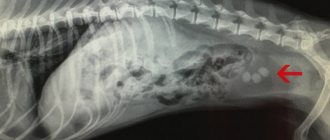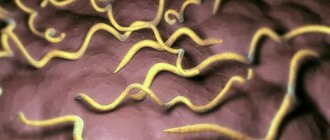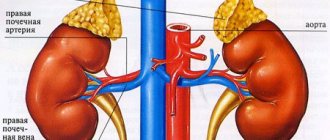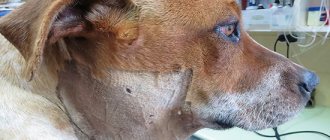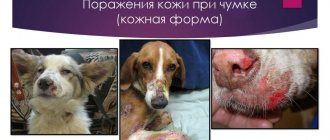Release form
The calcium metabolism regulator is available in the form of a colorless, odorless liquid. A 2% suspension is prepared from it, intended for oral administration. Available in plastic jars of 50 or 100 ml.
The calcium metabolism regulator is available in the form of a colorless, odorless liquid.
Pharmacological properties of the drug Xidifon
Pharmacodynamics
The action of the drug is aimed at normalizing calcium metabolism. As a result, the removal of calcium from bone tissue is reduced. In addition, the medicine has anti-inflammatory activity and prevents the aggregation and growth of calcium salt crystals in the urine (oxalates, phosphates and mucopolysaccharides, etc.).
The active substance of the drug can accelerate the removal of metals from the body - magnesium, strontium, tin, silicon, lead. At the same time, the water-electrolyte balance is not disturbed.
Clinical experiments have confirmed the effectiveness of the drug in the complex treatment of bronchial asthma. In this regard, its effect has not yet been fully studied. Experts suggest that the drug stabilizes the membranes of special cells (immunocompetent).
Pharmacokinetics
T1/2 of the substance is 1 day. It is not metabolized inside the body. It is excreted unchanged by the kidneys. Absorbed from the gastrointestinal tract within half an hour after oral administration.
Clinical experiments have confirmed the effectiveness of the drug in the complex treatment of bronchial asthma.
What does the appearance of oxalates in urine mean?
Salt deposits lead to the formation of stones and sand in the animal's bladder and kidneys. The dog experiences pain when urinating, whines and behaves strangely, looks nervous or scared. If your pet's behavior has changed, this is a reason to be examined by a veterinarian. In the case of urolithiasis, you should not delay; the sooner you take action, the easier the treatment will be when the disease has not yet progressed. Further therapy depends on what type of stones have formed in the tissues of the kidneys or bladder.
Causes of urolithiasis in dogs:
- Genetics. If one of the pet's parents suffered from the same disease, there is a high probability that he will have it too.
- Breed. Some breeds, due to their characteristics, have a congenital predisposition to urolithiasis. This often occurs in bulldogs, pugs, dachshunds, and hounds.
- Pathologies inside the body. Improper metabolism, dysfunction of the liver or kidneys will cause the disease. Sometimes urolithiasis provokes pathological changes in the animal’s vascular system.
- Infectious diseases. Urinary tract infections are dangerous.
- Floor. According to statistics, male dogs are more likely to suffer from urolithiasis.
A dog does not always get sick due to congenital characteristics or diseases. Improper living conditions for the animal lead to ICD:
Take the Attention Test! Find 10 differences! (click right here!)
Find the answer Are you bothered by some problem or question? Enter “Breed” or “Name of the problem” into the form, press Enter and you will find out everything about the issue that interests you.
- Ignoring the needs of the animal. If the dog is forced to wait a long time before going to the toilet, the urine begins to stagnate and crystallize. This is the process of formation of those same oxalates.
- Little activity. The dog must exercise a lot, otherwise the animal will become a victim of obesity. Excess weight leads to stagnation of fluids in the body and urine.
- Lack of water. Your pet should always have free access to water. It is important to monitor the quality of drinking; the water must be filtered and not contain harmful impurities.
- Poor nutrition. Just like people, animals need a balanced amount of protein, fat and carbohydrates and eat regularly. You cannot mix natural and dry food, overfeed your pet or keep it only on meat and cereals. Excess proteins and fats lead to urolithiasis.
Oxalates do not accumulate overnight, turning into sand and stones, it is a gradual process. When a dog is suffering from pain, the disease is already in an advanced state, it is important to be attentive to the health and behavior of the pet.
Signs of ICD:
- Frequent urination;
- Cloudy urine;
- Pinkish or even brown color of urine;
- The appearance of blood or pus;
- The dog began to lick the genitals more often than usual;
- Lethargic state;
- Poor appetite.
In a neglected state, the urinary tract becomes blocked, the dog begins to pee drop by drop, and there is too much blood in the urine. The animal loses a lot of weight, suffers from constant nausea and vomiting, convulsions may appear, and the body temperature rises. In such a critical condition, the dog may die. There is no need to wait for the full list of symptoms to appear. As soon as the urine becomes slightly cloudy, or the dog begins to ask to go to the toilet more often, this is a reason to consult a doctor.
Indications for use
The medicine is used in different groups of patients to regulate calcium metabolism in renal pathologies, hyperparathyroidism, hypervitaminosis D, and interstitial nephritis. In addition, the medicine is used to prevent osteoporosis and osteopenia.
The product is recommended for use to quickly remove various heavy metals from the body.
For kidney stones
For kidney stones, the medication prevents their growth and promotes accelerated elimination.
Choosing a veterinary clinic
We determine the veterinary clinic where you plan to go. A big PR company doesn't promise quality. The price is explained by the huge amount of money invested in advertising and “signboarding” of the establishment.
It’s great if you can ask your friends about clinics where their pets were treated “humanely.” If you travel far from them, it may be worth sacrificing time for the health of your pet.
A few more tips on how to spot an unverified veterinary clinic:
- Refusal to provide certificates and licenses for veterinary activities.
- Strange and suspicious behavior of the veterinarian (inconsistency, flattery, attempts to intimidate, shouting).
- Prices are too low (compared to other organizations).
- Refusal to freely visit the veterinary clinic.
“We have a sanitary day”
Beware of scammers!
When you contact the veterinary clinic, you are informed: “we cannot accept you at this address, sanitary day/repair/inspection.” How much intelligence does a dispatcher have? The client is persuaded to have a veterinarian come to his home. The price does not change.
Application of Xydiphone
The prepared solution should be taken orally, half an hour before meals. It is obtained by adding 9 parts of boiled or distilled water to 1 part of a 20% concentrate. The finished medication should be stored in the refrigerator. It is accepted approximately according to this scheme:
- patients over 10 years old: 1 tbsp. l. medications twice or thrice a day;
- 3-10 years: 2 tsp. 2-3 times a day;
- under 3 years: 1 tsp. 2-3 times daily.
The duration of primary therapy is 2 weeks. For urolithiasis, it is necessary to undergo 5-6 therapeutic courses with breaks, lasting 3 weeks. The total treatment period is from 12 to 24 months.
The prepared solution should be taken orally, half an hour before meals.
Treatment and prevention of osteoporosis require dosages of 5-8 mg per 1 kg of body weight. Therapy lasts up to 2-3 months. A repeat course can be carried out only after 1-2 months.
In the presence of osteopenia and trabecular osteoporosis in patients with arthritis, the drug is used for at least 12 months. Doses are taken at a rate of 5 to 10 mg/kg in 2 divided doses. In this case, it is advisable to consume nutritious foods that contain a lot of calcium salts (the best option is fresh cow's milk).
In case of a chronic form of intoxication (in hazardous industries, during constant work with heavy metals), 10 mg of the drug per 1 kg of weight is prescribed for 7-10 days. The drug is taken every month.
For bronchial asthma, a calcium regulator is used as part of complex treatment in patients over 16 years of age for 25-30 days.
Risk group
There is a predisposition to the development of urolithiasis at the genetic level. At the same time, in certain varieties of dog breeds, certain types of uroliths occur much more often than in others.
| Types of stones | Risk group |
| struvite | Beagles, Scotch Terriers, Poodles, Dachshunds, Pekingese. |
| urates | Dalmatians, bulldogs, Yorkshire terriers, Maltese dogs, Irish wolfhounds. |
| cystines | Dachshunds, English Bulldogs, Chihuahuas. |
| oxolates | Miniature Schnauzers, Lhasa Apso, Yorkies, Shih Tzu. |
Urolithiasis is very rare in shepherd dogs, boxers and collies.
Struvite type urolithiasis can affect an animal at any age. However, the disease is most often diagnosed in the age group from 4 to 6 years. This type of urolithiasis accounts for 60-70% of all sick pets.
Oxalates form in more mature dogs. Most often, the disease occurs in the 7-8th year of a pet’s life. Diagnosed in 10-20% of canines with ICD.
Urates are often detected in animals at the age of three. They can develop up to a year of age, primarily in dog breeds that have a predisposition to urate urolithiasis (associated with a congenital pathology - portosystemic shunt).
Cystines are most often found in male dogs aged 3 to 5 years. Bitches are practically not susceptible to cystine-type urolithiasis.
special instructions
When taking the solution, patients need to receive additional products containing vitamin D and calcium.
Can I take it during pregnancy and lactation?
The solution is not prescribed to nursing and pregnant women.
In childhood, dosages are selected taking into account the age of the patient.
Use in childhood
Dosages are selected taking into account the age of the patient.
For impaired renal function
In such cases, individual adjustment of the dosage regimen is required.
For liver dysfunction
If organ function deteriorates, careful dose adjustment is required.
Nutrition and diet for urolithiasis in dogs
Whatever course of treatment is chosen, one of the most important aspects for recovery is diet. It is impossible to feed a dog with urolithiasis as before. Depending on the type of stones, the doctor will prescribe a new diet. To destroy alkaline formations such as struvite and oxalates, super-premium PK class food Urinary S/O is used. For the treatment of acidic uroliths (urates and cystines), the Urinary U/C class is used. There is a separate food for dogs with small breeds with urolithiasis – Urinary S/O.
You can find medicated dog food for urolithiasis of the desired category at a veterinary pharmacy or pet store, however, it is better to discuss the specific brand and name with your doctor in advance. For example, for general prevention and treatment of urolithiasis it is often recommended:
- Royal Canin Urinary S/O/ Urinary.
- Eukanuba Oxalate Urinary Formula.
- Hills Prescription Diet™ Canine k/d.
For oxalates use:
- Eucanuba Oxalate Urinary Formula.
- Hills Prescription Diet™ Canine c/d™ Multicare$/.
For cystine and urate types of disease, Urinary U/C Low Purine UUC18 is prescribed.
For pets on a natural diet, the doctor also describes the new regimen in detail. It is important to normalize the pH balance and reduce the load on the kidneys. The amount of protein, phosphorus and calcium decreases. Fatty, salty, sweet and fried foods are completely excluded from the diet. The menu should include cereals, meat, and vegetables.
Most often, the prognosis for recovery is favorable, however, owners should remember that more often urolithiasis is not completely cured, but is stopped. That is why, after the symptoms are relieved, the diet and treatment cannot be interrupted.
Video: what is urolithiasis in dogs, its symptoms and treatment
Products containing Xidifon
- Cream Ksenia;
- KSIcream Refarm;
- Phosphotech;
- Pleostat.

